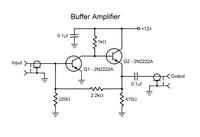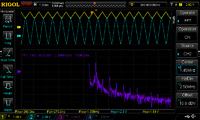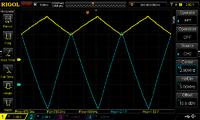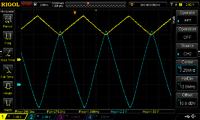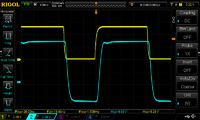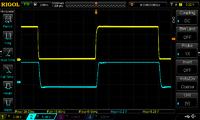BrunoARG
Full Member level 4

- Joined
- Aug 15, 2014
- Messages
- 214
- Helped
- 38
- Reputation
- 76
- Reaction score
- 38
- Trophy points
- 28
- Location
- Buenos Aires, Argentina
- Activity points
- 2,177
Hello guys, I need some help with transistors.
I need to find an addecuate model for my application. It has to be cheap and wide available (I mean, if it can be a well known model (such as 2n3904 for general use) it would be better.
What I am looking for is fast transistors. I don't need UHF transistors but what I am working on is in that uncomfortable transition region where it is not low frequency nor high frequency... Do I explain myself? It will work from few Hz to 1MHz (where it starts to get trouble) and I am looking to reach at least 5 or 10MHz. I have seen people working with higher frequencies so I think it is possible and affordable.
I simulated with LTSpice a common emitter at Av=5 with 2n3904,2n2222,bc547, etc. General use transistors.
The cutoff frequency was 1MHz (-3dB). I got some minimal variations between these models.
Then I simulated a cascode with 2n2222 (which has to had a higher bandwidth, theorically) and I got the same response.
I need to make an amplifier with Av=10 as maximum, for that 5 or 10MHz frequency.
What models would you recommend me to try? What datasheet characteristics should I take into account?
Supply is +-12v and current doesn't exceed 50mA in any transistor.
Hope you can help me, I would be thankful.
______________________________________________
EDIT:
I found these:
https://pira.cz/pdf/2N3866A.pdf
https://www.fairchildsemi.com/datasheets/MM/MMBT5551.pdf
I would also need the complementary PNPs, which I can't seem to get where I live. I had to try ordering from ebay or aliexpress.
I need to find an addecuate model for my application. It has to be cheap and wide available (I mean, if it can be a well known model (such as 2n3904 for general use) it would be better.
What I am looking for is fast transistors. I don't need UHF transistors but what I am working on is in that uncomfortable transition region where it is not low frequency nor high frequency... Do I explain myself? It will work from few Hz to 1MHz (where it starts to get trouble) and I am looking to reach at least 5 or 10MHz. I have seen people working with higher frequencies so I think it is possible and affordable.
I simulated with LTSpice a common emitter at Av=5 with 2n3904,2n2222,bc547, etc. General use transistors.
The cutoff frequency was 1MHz (-3dB). I got some minimal variations between these models.
Then I simulated a cascode with 2n2222 (which has to had a higher bandwidth, theorically) and I got the same response.
I need to make an amplifier with Av=10 as maximum, for that 5 or 10MHz frequency.
What models would you recommend me to try? What datasheet characteristics should I take into account?
Supply is +-12v and current doesn't exceed 50mA in any transistor.
Hope you can help me, I would be thankful.
______________________________________________
EDIT:
I found these:
https://pira.cz/pdf/2N3866A.pdf
https://www.fairchildsemi.com/datasheets/MM/MMBT5551.pdf
I would also need the complementary PNPs, which I can't seem to get where I live. I had to try ordering from ebay or aliexpress.
Last edited:


